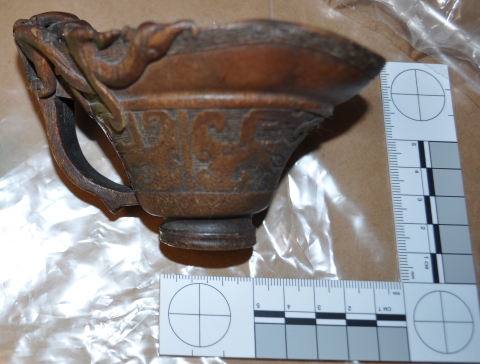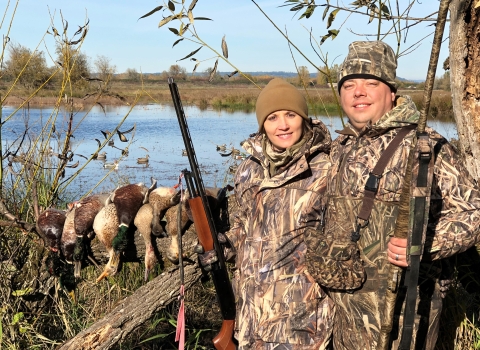World Wildlife Day on March 3 is recognized as an annual celebration of the planet’s wild fauna and flora. Iris and ibex, grouper and gator, and wild species of all kinds provide continuing benefit to people around the world.
The U.S. Fish and Wildlife Service, through our Office of Law Enforcement (OLE), protects wildlife through the enforcement of conservation laws; facilitating the legal and sustainable trade of wildlife products, while fighting the trade of illegal wildlife items. In addition to issuing permits for the legal import and export of wildlife and products, OLE wildlife inspectors and special agents may seize items derived from protected species during inspections of cargo shipments or investigations of criminal activity. Once confiscated, some items travel to the National Wildlife Property Repository.
Nestled within the prairie grasses of Rocky Mountain Arsenal National Wildlife Refuge, just 10 miles from downtown Denver, the repository holds on its shelves a storied history of wildlife crime and protection. The facility is home to over 1.3 million products, from python skin boots to pangolin scales, carved ivory to corals, jewelry to ginseng, migratory birds to medicinals.
Many of these items hold memories of OLE’s efforts in the fight to stop the illegal trade such as crates of rhinoceros products collected during Operation Crash. Named for a herd (or “crash”) of rhinoceros, Operation Crash is a comprehensive, OLE-led, multi-agency effort to investigate global trafficking of rhinoceros horn and elephant ivory. Since its inception in 2011, the project has secured the arrests of over 40 individuals, who were sentenced to 516 months in prison time; ordered to pay $2.1 million in fines and $5.7 million in restitution; and the extradition of five individuals to the United States. Whole rhino horns, carved horn libation cups, one black rhinoceros’ mounted head and shoulders, and more now reside at the repository, bought by or sold to undercover agents or seized throughout the investigation. Operation Crash is just one of OLE’s successful operations.
Other investigations’ seizures sit mere steps away. Adult tigers and cubs from trafficking rings busted during Operation Snow Plow, now preserved as taxidermy mounts sit near rows of raw and carved ivory from elephants, narwhals, walrus, and whale seized from investigations such as Operation Old School. On shelf after shelf, fashion accessories, medicinal products, and pelt rugs illustrate the voracious demand for illegal wildlife products and the urgent need for our work in the fight against wildlife trafficking.
Once the items are in the care of the repository, their stories continue. Many are loaned to educational programs or institutions, some aid in scientific research to inform conservation strategies, and others are used in law enforcement investigations. Following ongoing renovations, the repository education team plans to offer facility tours, outreach programs, and virtual learning experiences, using the diverse collection to teach others about wildlife, the sustainability of the legal wildlife trade, and the importance of protecting the planet’s most vulnerable species. The facility’s reopening date remains to be determined: watch the repository's website for opportunities to visit and learn more.
This World Wildlife Day, and every day, do your part to protect wildlife.





